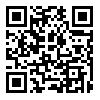
Journal of Emergency Health Care
Formerly known as: International Journal of Medical Investigation

Volume 8, Issue 2 (5-2019)
J Emerg Health Care 2019, 8(2): 120-125 |
Back to browse issues page
Download citation:
BibTeX | RIS | EndNote | Medlars | ProCite | Reference Manager | RefWorks
Send citation to:



BibTeX | RIS | EndNote | Medlars | ProCite | Reference Manager | RefWorks
Send citation to:
Oudat M, Al Domour A, Al Shiab A, Al Adamat M, Al Etan S, Al Dwarii A R. Neurological Disorders due to Recurrent Hypoglycemia. J Emerg Health Care 2019; 8 (2) :120-125
URL: http://intjmi.com/article-1-407-en.html
URL: http://intjmi.com/article-1-407-en.html
Mazen Oudat * 
 , Aktham Al Domour
, Aktham Al Domour 
 , Awni Al Shiab
, Awni Al Shiab 
 , Mohamad Al Adamat
, Mohamad Al Adamat 
 , Shahir Al Etan
, Shahir Al Etan 
 , Abed Rahim Al Dwarii
, Abed Rahim Al Dwarii 


 , Aktham Al Domour
, Aktham Al Domour 
 , Awni Al Shiab
, Awni Al Shiab 
 , Mohamad Al Adamat
, Mohamad Al Adamat 
 , Shahir Al Etan
, Shahir Al Etan 
 , Abed Rahim Al Dwarii
, Abed Rahim Al Dwarii 

Neurologist and Internist at Royal Medical Services, King Hussein Hospital, Amman, Jordan.
Abstract: (7571 Views)
The most important material for the brain tissues is glucose .The brain utilizes around (25%) of the body's glucose, and it's metabolism thought to be primarily by astrocytes through non-insulin dependent (GLUT-1) transporter and insulin dependent (GLUT-4) transporter, but the brain contains very limited stores of glycogen, and therefore it can't regulate it's function for long time without glucose.
So neuronal damage can lead to multiple neurological manifestations as a result of hypoglycemia acutely; stroke like symptoms, movement disorders (tremor, ataxia, difficulty of walking), seizures, coma and death; chronically and repetitive leads to cognitive impairment. Which means clinical picture appears according to the area of neuronal damage.
So neuronal damage can lead to multiple neurological manifestations as a result of hypoglycemia acutely; stroke like symptoms, movement disorders (tremor, ataxia, difficulty of walking), seizures, coma and death; chronically and repetitive leads to cognitive impairment. Which means clinical picture appears according to the area of neuronal damage.
Keywords: NMDA receptor: N-Methyl-D-Aspartate receptor, WM: White Matter, ischemia, neuronal DNA, Hypoxia, Basal ganglia, cerebral peduncle.
References
1. 1. Harris S. Hyperinsulinism and dysinsulinism. Journal of the American Medical Association. 1924;83:729-733.
2. Gerich JE BG. Counterregulatory failure. In: Frier BM FB, ed. Hypoglycaemia and diabetes: Clinical and physiological aspects. London: Edward Arnold; 1993:253-267.
3. Auer RN, Wieloch T, Olsson Y, Siesjö BK. The distribution of hypoglycemic brain damage. Acta Neuropathologica. 1984;64:177.
4. Suh SW, Hamby AM, Swanson RA. Hypoglycemia, brain energetics, and hypoglycemic neuronal death. Glia. 2007;55:1280-1286.
5. Sutherland GR, Tyson RL, Auer RN. Truncation of the krebs cycle during hypoglycemic coma. Med Chem. 2008;4:379-385.
6. Sandberg M, Butcher SP, Hagberg H. Extracellular overflow of neuroactive amino acids during severe insulin-induced hypoglycemia: In vivo dialysis of the rat hippocampus. J Neurochem. 1986;47:178-184.
7. Olney JW, Sharpe LG. Brain lesions in an infant rhesus monkey treated with monsodium glutamate. Science. 1969; 166:386-388.
8. Wieloch T, Engelsen B, Westerberg E, Auer R. Lesions of the glutamatergic corticostriatal projections in the rat ameliorate hypoglycemic brain damage in the striatum. Neurosci Lett. 1985;58:25-30.
9. Wieloch T. Hypoglycemia-induced neuronal damage prevented by an n-methyl-daspartate antagonist. Science. 1985;230:681-683.
10. Sandberg M, Nystrom B, Hamberger A. Metabolically derived aspartate--elevated extracellular levels in vivo in lodoacetate poisoning. J Neurosci Res. 1985;13:489-495.
11. Olney JW. Inciting excitotoxic cytocide among central neurons. Adv Exp Med Biol. 1986;203:631-645.
12. Choi DW. Ionic dependence of glutamate neurotoxicity. J Neurosci. 1987;7:369-379.
13. Choi DW. Glutamate neurotoxicity and diseases of the nervous system. Neuron. 1988;1:623-634.
14. Choi DW, Maulucci-Gedde M, Kriegstein AR. Glutamate neurotoxicity in cortical cell
15. MacDermott AB, Mayer ML, Westbrook GL, Smith SJ, Barker JL. Nmda-receptor activation increases cytoplasmic calcium concentration in cultured spinal cord neurones. Nature. 1986;321:519.
16. Dugan LL, Sensi SL, Canzoniero LM, Handran SD, Rothman SM, Lin TS, Goldberg MP, Choi DW. Mitochondrial production of reactive oxygen species in cortical neurons following exposure to n-methyl-d-aspartate. J Neurosci . 1995;15:6377-6388.
17. Kang EG, Jeon SJ, Choi SS, et al. Diffusion MR imaging of hypoglycemic encephalopathy. AJNR Am J Neuroradiol 2010;31:559.
18. Chan R, Erbay S, Oljeski S, et al. Case report: hypoglycemia and diffusion-weighted imaging. J Comput Assist Tomogr 2003;27:420.
19. Massaro F, Palumbo P, Falcini M, et al, Generalized chorea-ballism in acute non ketotic hyperglycemia: findings from diffusionweighted magnetic resonance imaging. Parkinsonism Relat Disord 2012;18:998.
20. Gracia-Monco JC, Cortina IE, Ferreira E, et al. Reversible splenial lesion syndrome (RESLES): what’s in a name? J Neuroimaging 2011; 21:e1–e14.
21. Ma JH, Kim YJ, Yoo WJ, et al. MR imaging of hypoglycemic encephalopathy: lesion distribution and prognosis prediction by diffusion-weighted imaging. Neuroradiology 2009;51:641–49.
22. Fujioka M, Okuchi K, Hiramatsu K, et al. Specific changes in human brain after hypoglycemic injury. Stroke 1997;28:584 –87.
23. Atay M, Aralasmak A, Sharifov R, et al. Transient cytotoxic edema caused by hypoglycemia: follow-up diffusion weighted imaging features. Emerg Radiol 2012 Apr 14 [Epub ahead of print .
24. Brain glucose metabolism during hypoglycemia in type 1 diabetes: insights from functional and metabolic neuroimaging studies, Hanne M. M. Rooijackers, Evita C. Wiegers, Cees J. Tack, Marinette van der Graaf, and Bastiaan E. de Galan article in PMC journal in NCBI, Published online 2015 Oct 31. doi: 10.1007/s00018-015-2079-8.
25. Reversible MRI changes of prolonged hypoglycemia
Surinder Thakur1, NM Sharath Babu1, Jatinder K Mokta1, Sanjeev Sharma2,journal of medical nutrition and nutraceutcals, DOI: 10.4103/2278-019X.131963,web publication 6-may-2014.
| Rights and permissions | |
 |
This work is licensed under a Creative Commons Attribution-NonCommercial 4.0 International License. |

